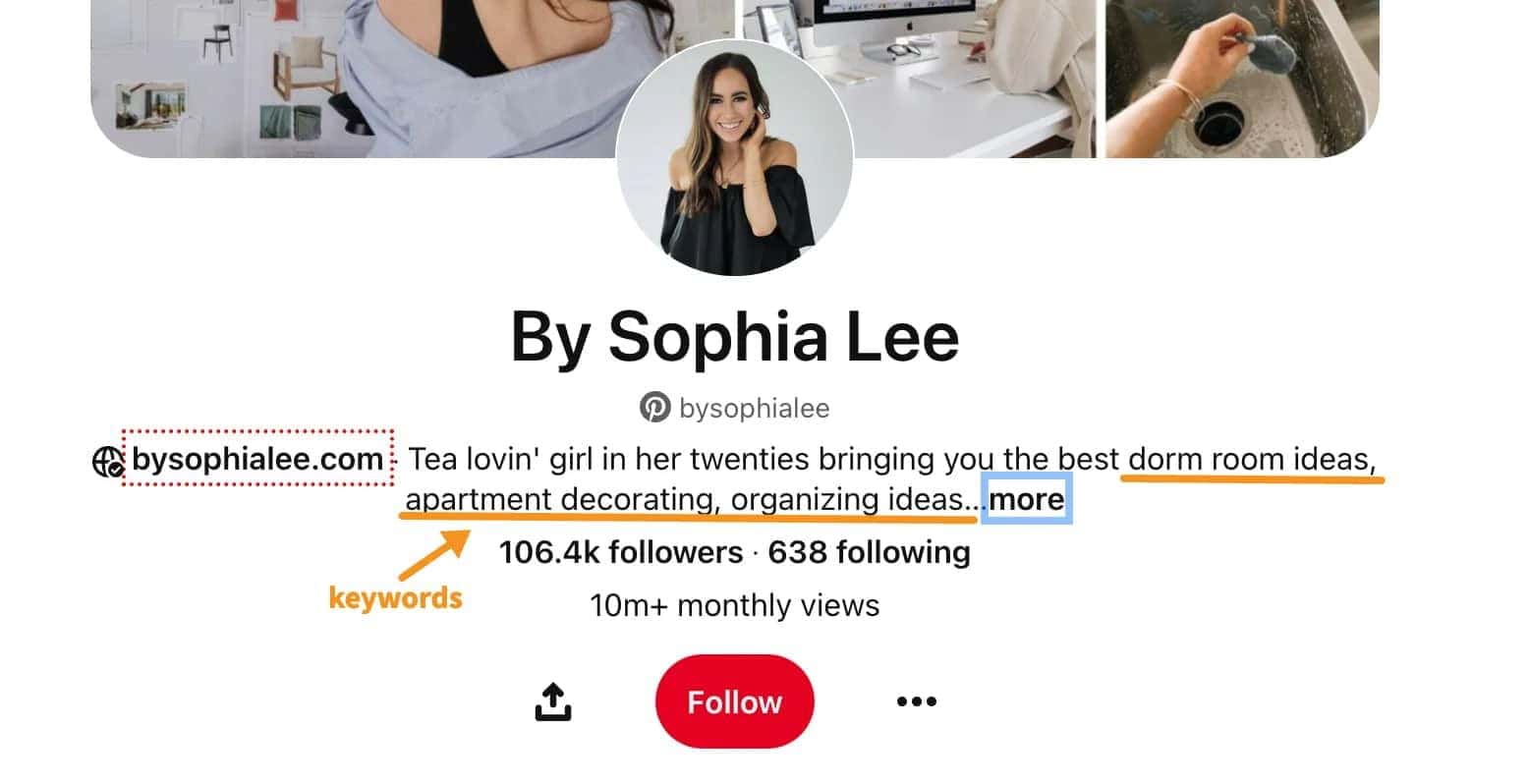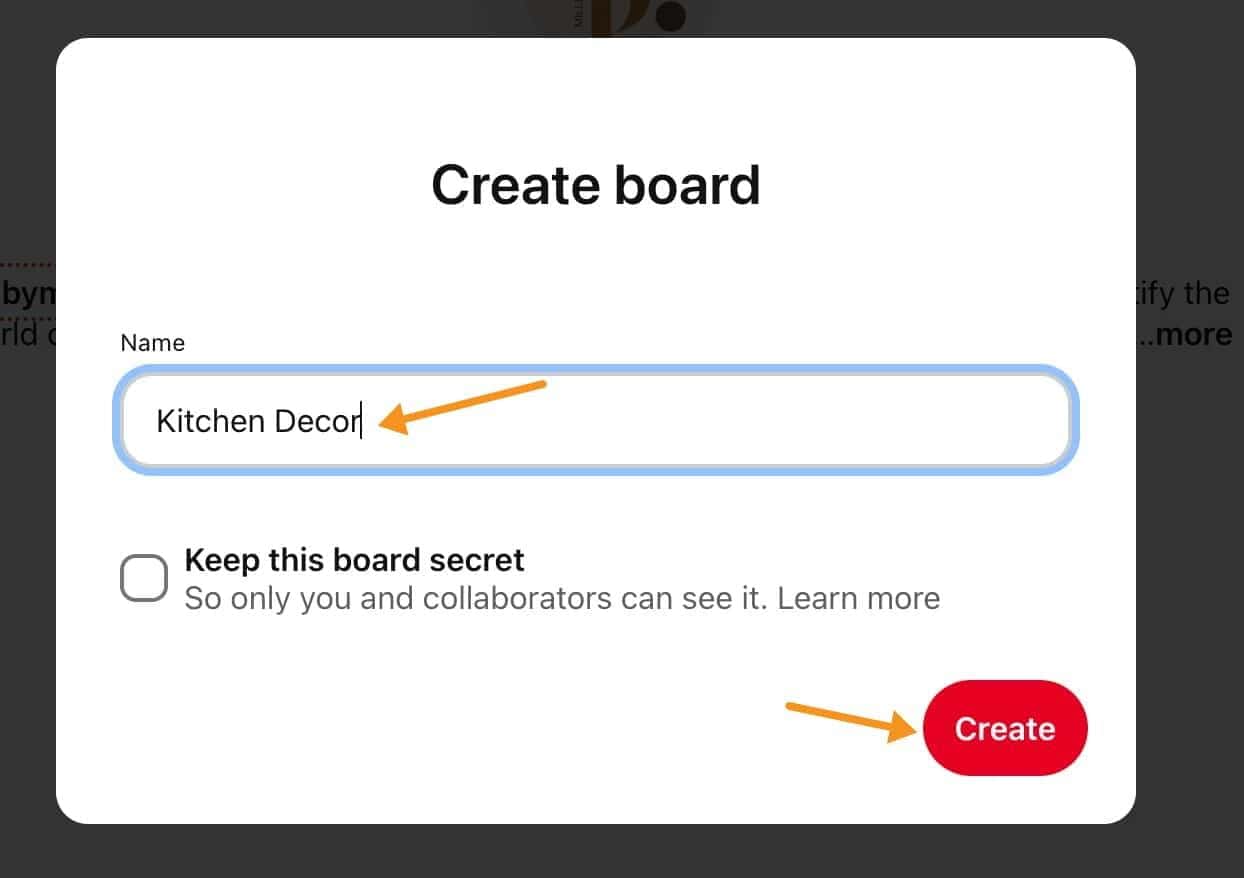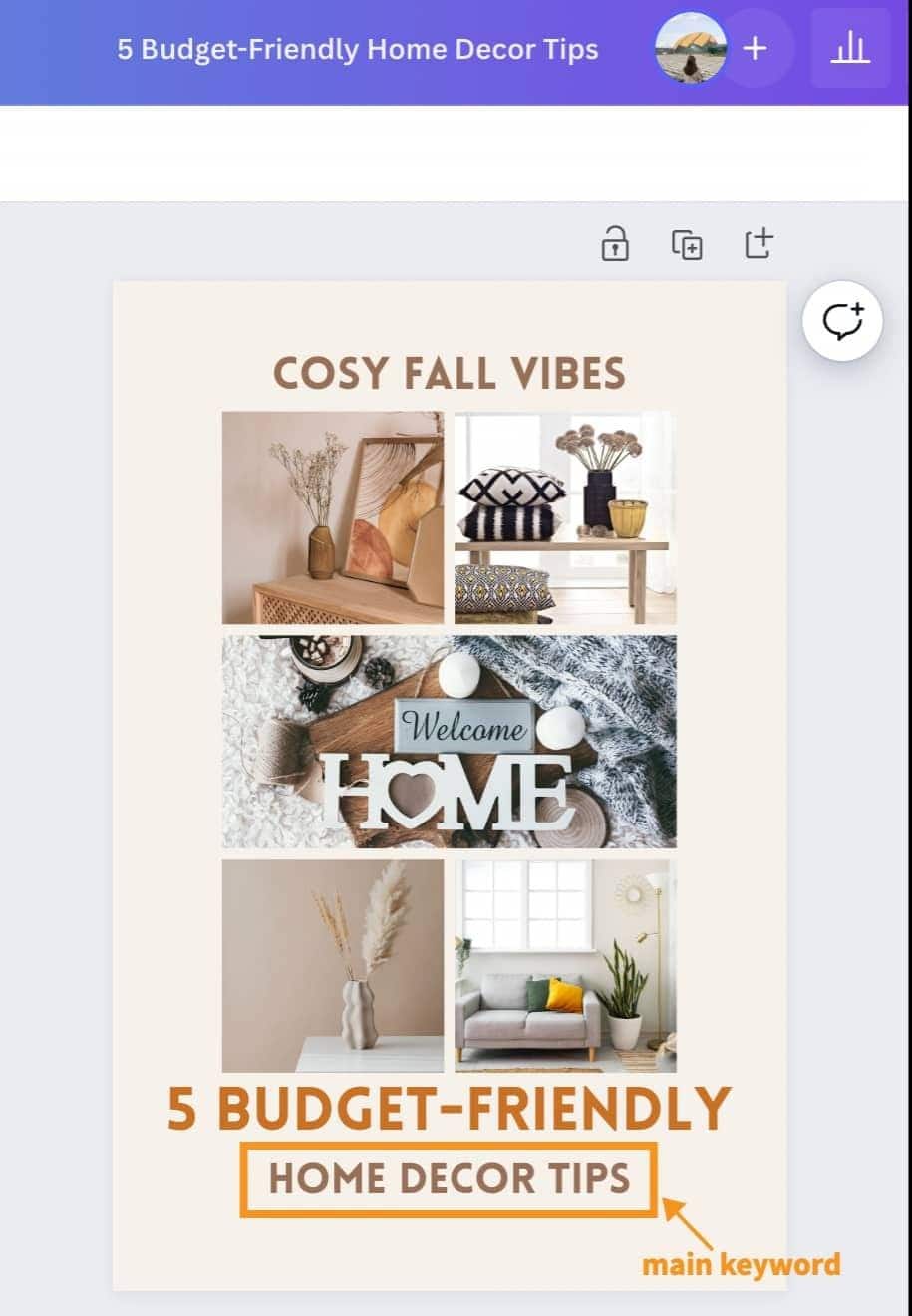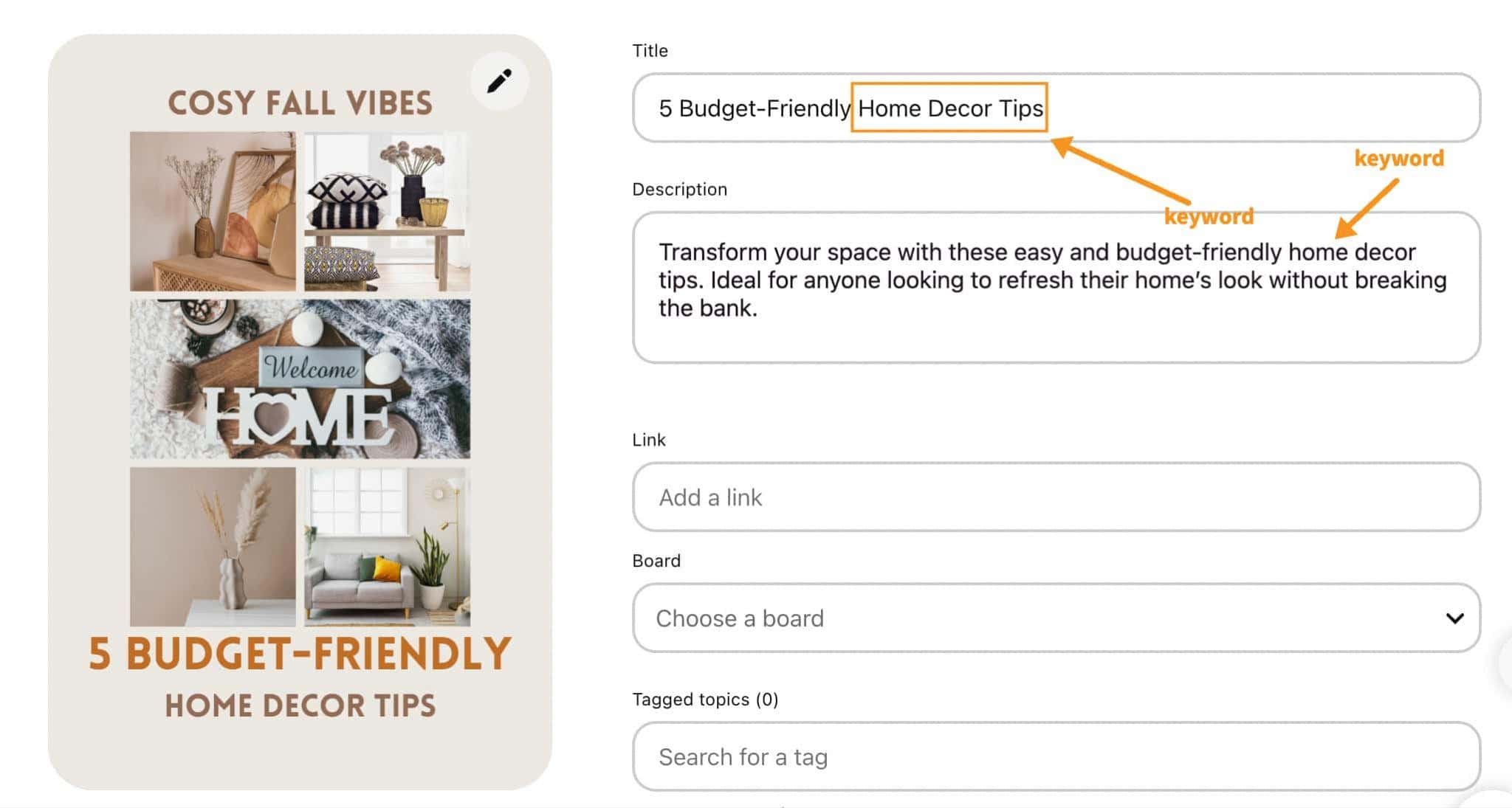The idea of making money on Pinterest without running a blog might seem like a stretch, but it’s entirely possible. You’re not alone if the thought of maintaining a blog is a bit too much.
But with Pinterest, you can leverage the visual nature of the platform to showcase products, create inspiring boards, and directly link to affiliate products or online stores.
With Pinterest boasting over 450 million active users, the potential for earning is significant.
Do you know that Pinterest users are 90% more likely to be in a shopping mindset, making it a key platform for affiliate marketing and direct sales?
In this article, I’ll share all you need about Pinterest affiliate marketing and 8 actionable steps to monetize your Pinterest activity with no blog in sight. So, let’s dive in and start pinning your way to profit.
What is Pinterest affiliate marketing?
Pinterest affiliate marketing is essentially a way for you to earn money by promoting products on Pinterest.
Here’s how it works:
First, you join an affiliate program offered by a company whose products you’re interested in. They give you a unique link that tracks any sales made through it.
You then create pins on Pinterest featuring these products and include your affiliate link in the pin’s description.
When someone browsing Pinterest sees your pin and is interested in the product, they can click on your link to make a purchase. If they do buy something, the company knows it was thanks to your pin because of the unique link, and you get a commission for that sale.
It’s a straightforward process: share what you like, and if it leads to a sale, you get a piece of the profit. This method is popular among bloggers, influencers, and anyone looking to monetize their Pinterest presence.
Benefits of Pinterest for Affiliate Marketing
Pinterest is a powerhouse when it comes to affiliate marketing and for good reasons.
First off, it’s visual. We all know a picture is worth a thousand words, and on Pinterest, your images can catch the eye of potential buyers and draw them in. This visual appeal is key in showcasing products and sparking interest.
Another big plus is the shelf life of a pin. Unlike a tweet or a Facebook post that gets buried in a feed within hours, a pin can be discovered and rediscovered months, even years, after you’ve posted it. This means your affiliate links keep working for you long after you’ve pinned them.
Then there’s the trust factor. People on Pinterest are there to find ideas and products they can use.
When you share something that fits their needs or interests, they will trust your recommendation and click through.
And let’s not forget about reach. With the right strategy, a single pin can be seen by a huge number of people, multiplying your chances of making a sale.
So, in a nutshell, Pinterest can help you reach a large audience with visually appealing pins that build trust and have a long-lasting impact. It’s a simple yet effective way to boost your affiliate marketing efforts.
8 Actionable Steps to Start Earning With Pinterest Affiliate Marketing
Finding Profitable Niches on Pinterest

To pick a niche on Pinterest that could make you money, start by thinking about what you like and match it with what’s hot on Pinterest.
The “Pinterest Predicts” report is a good place to look because it tells you about trends starting to become popular. Aim for something you’re excited about but have many people looking into it.
This way, you’re working on something you enjoy and have a good chance of attracting an audience that’s into it, too.
Creating a Pinterest Business Account
The beauty of a Pinterest Business Account is that it’s entirely free and provides several advantages over a personal account.
With a business account, you can leverage Pinterest’s business-specific features, including analytics, website links on your profile, and Rich Pins, which keep your pins updated with your website’s latest info.
This feature is particularly useful for measuring the impact of your content and adjusting your strategy accordingly.
Optimize your Pinterest Profile
Start by choosing a catchy profile name that resonates with your niche in affiliate marketing. This helps in creating an immediate connection with your target audience.
Your profile picture should be your real image. This adds a personal touch and builds trust with your audience. A genuine, friendly photo can make your profile more approachable and relatable, which is important in affiliate marketing.
When filling out your ‘About’ section, focus on a clear and engaging description of your offer and include keywords relevant to the products you are promoting.
These keywords (which you can find with the Pinterest search bar or tools like Pin Inspector) make it easier for potential customers to find you when they search on Pinterest.
Here’s an example:

This is your chance to showcase your expertise in your affiliate niche.
Creating Targeted Pinterest Boards

Creating a Pinterest board is a simple yet effective way to organize and showcase your interests or business content, and we’ll use a kitchen theme to illustrate this process.
Here’s how to set up a general Pinterest board with a focus on kitchen-related content. If your niche is coffee, DIY, food, or any other topic, the process is the same.
- Choose a Theme: Pick a specific kitchen topic, like “Kitchen Decor” or “Modern Kitchen Designs.”
- Research Keywords: Use Pinterest to find popular terms related to your theme. This helps in targeting the right audience.
- Create the Board: On your profile, click ‘Create Board.’ Name it with a related keyword, like “kitchen decor inspiration” or “kitchen decor inspiration ideas.
- Write a Description: Add a brief summary for your board using a few keywords from your research. This boosts searchability.
- Start Pinning: Add pins that match your theme, whether it’s your content or from creators.
- Regularly Update: Keep your board organized and updated. If you see distinct subtopics, consider making more specific boards.
With this approach, your Pinterest board will be a go-to resource for kitchen ideas, attracting followers interested in this theme. One way to make your kitchen-related content board on pinterest more lucrative is by using kitchen design software that builds modern kitchen designs in a giffy. You can pin all new content along with the ones you find on Pinterest and make the board a blend of unique and viral designs.
5. Create Click-Worthy Pins
For crafting pins that grab attention on Pinterest, Canva is your go-to design ally. Here’s a streamlined process to make your pins click-worthy:
First, design your image with Canva
Start by selecting a Pinterest-friendly template in Canva. The beauty of Canva lies in its simplicity and the plethora of options it offers – from fonts and colors to images and layouts.
Add your main keyword visually within your Canva design to make the pin’s focus crystal clear from the get-go.

Next, work on the pin title and description
Once your design is ready, focus on crafting a compelling pin title. This title should be concise yet descriptive, adding your main keyword to boost discoverability.
For example, if your keyword is “home decor tips,” a title like “5 Budget-Friendly Home Decor Tips” will directly target your audience.
The pin description is where you can elaborate a bit more. Use this space to include related keywords and give viewers a reason to click.
Continuing with the “home decor tips” keyword, your description could be something like, “Transform your space with these easy and budget-friendly home decor tips. Ideal for anyone looking to refresh their home’s look without breaking the bank.”

This approach ensures your pins are not only visually appealing but also optimized for Pinterest search, making them more likely to be seen and clicked on by your target audience.
6. Promoting Affiliate Products with Product Tagging Feature
The ‘Product Tagging’ feature is a big win for anyone looking to share products they recommend, especially for generating more affiliate sales.
With the new product tagging feature, you can now link directly to items in your pins. This applies to all types of pins, from image pins to video pins.
For example, if you post a video showcasing a delicious pizza recipe, you can tag the mixer you use to prepare the dough directly in the pin and include your affiliate link.
This way, viewers who want to try your recipe can easily find and purchase the same mixer. It’s a direct and effective way to connect your audience with the products you use and endorse.
To start, upload your pin and look for the ‘tag products’ option on the left. From there, you can add your affiliate link.
Pinterest even helps you stay compliant with disclosure requirements by prompting you to indicate if it’s an affiliate link, especially on mobile.
This transparency is key to building trust with your audience.
Once your pin is live, it will show a small tag indicating there are products linked. Users can click and be taken straight to the product page to learn more or make a purchase. 
7. Schedule your pins
When you’re managing a busy schedule as a creator or entrepreneur, finding time for Pinterest can be challenging.
Yet, consistency on this platform is the key to success. Here’s a simple yet effective strategy to schedule your pins in batches to help you stay on top of your Pinterest game without spending all day on it.
This approach will save you time and let you focus on other important aspects of your work.
Before scheduling, analyze your audience’s behavior and past content performance. Identify the times when your audience is most active and the types of content that resonate with them.
Use Pinterest Analytics to gather this data and inform your scheduling strategy.
Then, decide how many pins you want to post each day, keeping in mind your goal for the next two weeks. Balance this between your top-performing content and new content.
Typically, you can generate 5-6 new pins for each fresh post, while high-performing posts require 3-4.
Finally, schedule and automate your pins using Pinterest’s native scheduler. This feature lets you plan your pins two weeks in advance, a great time-saver if you don’t have a team managing your account.

8. Analyzing Performance with Pinterest Analytics

Pinterest Analytics gives you clear insights into how many people view and interact with your content.
With these metrics, you can identify which pins are most popular and which might need a little more work. It’s a straightforward approach to seeing what resonates with your audience, helping you refine your strategy and create content that is more likely to engage your followers.
With Pinterest Analytics, you’re equipped with the knowledge to make informed decisions about your future pins.
In addition to these actionable steps, it’s important to engage with your Pinterest community actively.
Engagement can significantly amplify your affiliate marketing efforts on the platform. Make it a habit to respond to comments on your pins, follow back engaging users, and comment on other pins that are relevant to your niche.
This creates a sense of community and can increase the visibility of your pins through Pinterest’s algorithm.
It’s important to note that Pinterest values content that fosters interaction and community engagement.
By being active and engaging with others, you not only boost your profile’s visibility but also establish credibility and trustworthiness in your niche.
This, in turn, can lead to higher click-through rates on your affiliate links, ultimately increasing your potential earnings without the need for a traditional blog.
Final Thoughts on Pinterest Affiliate Marketing
As we wrap up, let’s quickly go over the key strategies for successful affiliate marketing on Pinterest in 2024.
Remember, it’s all about creating eye-catching pins with clear, honest captions and a friendly call-to-action.
Remember to disclose your affiliate relationships and stick to Pinterest’s guidelines.
These steps build trust with your audience and ensure you’re on the right side of the law. Now, if you haven’t tried affiliate marketing on Pinterest yet, give it a shot.
It’s a fantastic platform for this, even if you don’t have a blog. With the right approach, Pinterest can be a powerful tool in your affiliate marketing arsenal, offering a unique way to earn money by sharing products you love.
So, dive in, experiment with different strategies, and see the potential for yourself. The world of Pinterest affiliate marketing is waiting for you!


